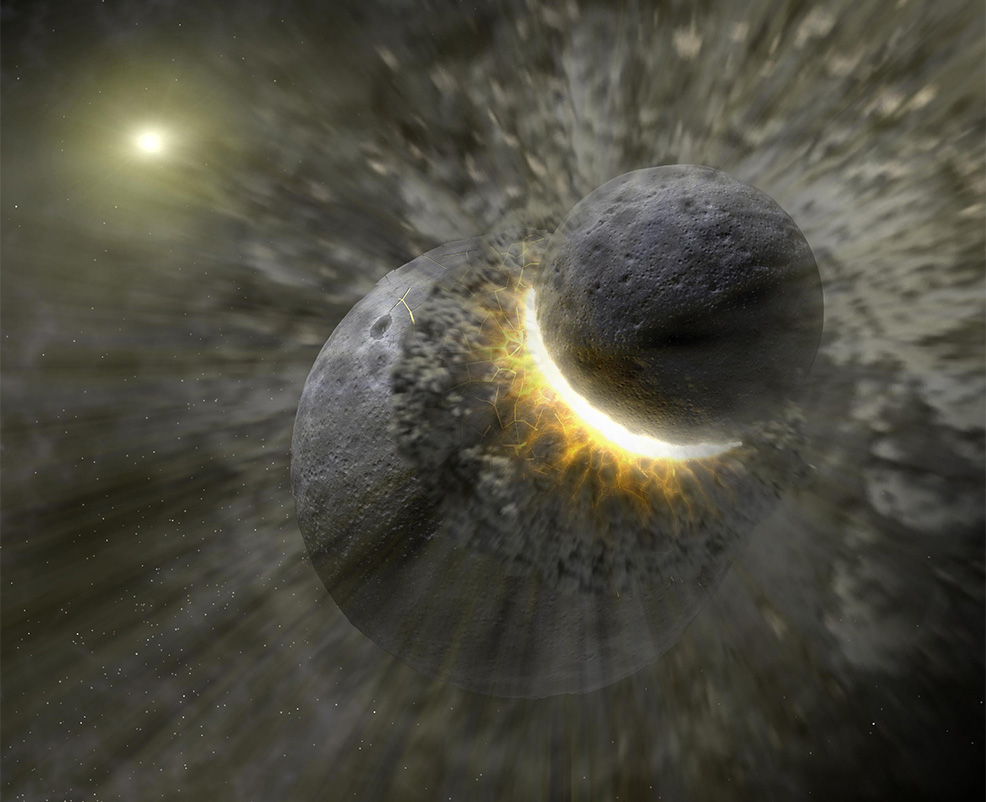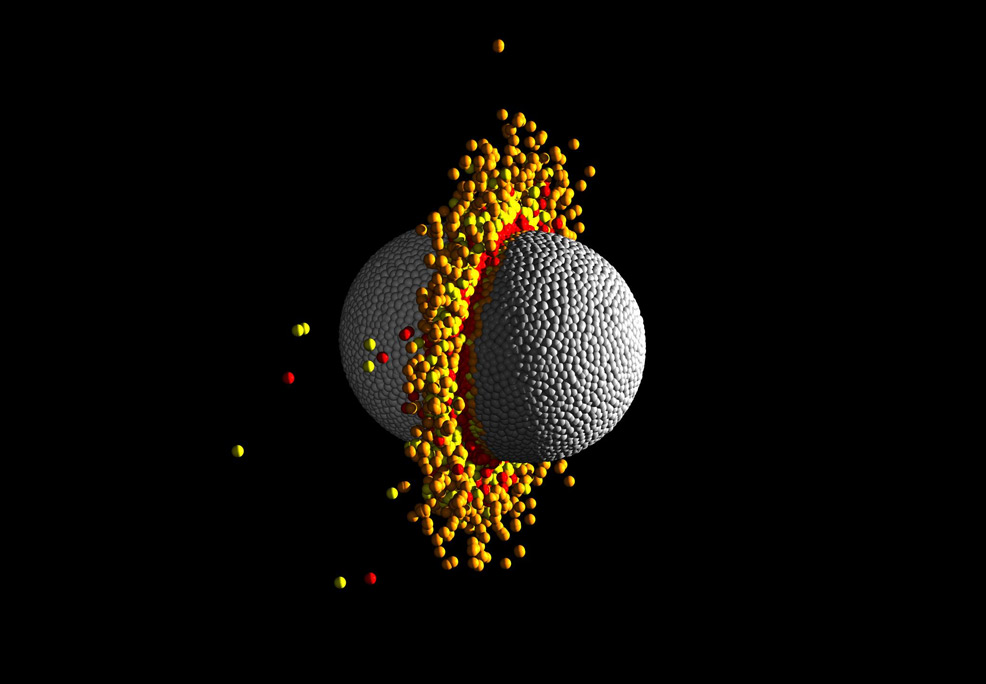
19th February 2019 Massive collision in the planetary system Kepler-107 Two planets orbiting the star Kepler-107 are likely the result of an impact similar to that which made the Earth produce our Moon.
Since 1995, when the first extrasolar planet was found to be orbiting a main sequence star, almost 4,000 of these distant worlds have been discovered in other solar systems. This has allowed scientists to identify and study a large variety of planetary configurations. The evolution of extrasolar planets is now known to be affected, primarily, by two phenomena: evaporation of the upper layers of a planet due to the effects of high-energy radiation (UV and X-rays) emitted by the central star, and by the impacts of other celestial bodies the size of a moon or planet. The former effect has been observed a number of times in extrasolar systems – but until now, there was no proof of the latter effect. Scientists from the Instituto de Astrofísica de Canarias (IAC), which operates two astronomical observatories in the Canary Islands, have published evidence of a massive planetary collision in the Kepler-107 system, approximately 1,670 light years from Earth. The central star, Kepler-107, is a G2-type star, the same as our own Sun, but slightly larger at 1.2 solar masses and 1.4 solar radius. It has four planets rotating around it. The two innermost planets are what drew the interest of astrophysicists. Using data from NASA's Kepler satellite and from the National Galileo Telescope (TNG) on the nearby La Palma island, the team determined the parameters of the star, and then measured both the radii and masses of these planets. Although the innermost two have similar radii, their masses are very different. In fact, the second is three times denser than the first. The extraordinarily high density of the planet Kepler 107c – over double that of the Earth – has intrigued researchers, and suggests that its metallic core is anomalously big for a planet. This would still be considered normal if it were not for the prediction that photo-evaporation causes the densest planet in a system to be the nearest to its star. To explain how it is possible that, in this case, the nearest has only half the density of the second, the hypothesis was proposed that the planet Kepler 107c was formed as the result of a major impact. This impact must have ripped away its outer layers, thus leaving the central core as a much bigger fraction than before. After tests carried out via simulations, this hypothesis seems to be the most likely.
This study will allow scientists to better understand the formation and evolution of exoplanets, the team says. Specifically, it highlights the importance of the relationship between stellar physics and exoplanetary research. "We need to know the star to better understand the planets which are in orbit around it," explains Savita Mathur, a researcher at the IAC in Tenerife, and one of the paper's authors. "In this study, we made a seismic analysis to estimate the parameters of the star that hosts the planet. Asteroseismology is playing a key role in the field of the exoplanets, because it has been shown that it is one of the best methods for a precise characterisation." The team's study is published in the journal Nature Astronomy.
Comments »
If you enjoyed this article, please consider sharing it:
|








